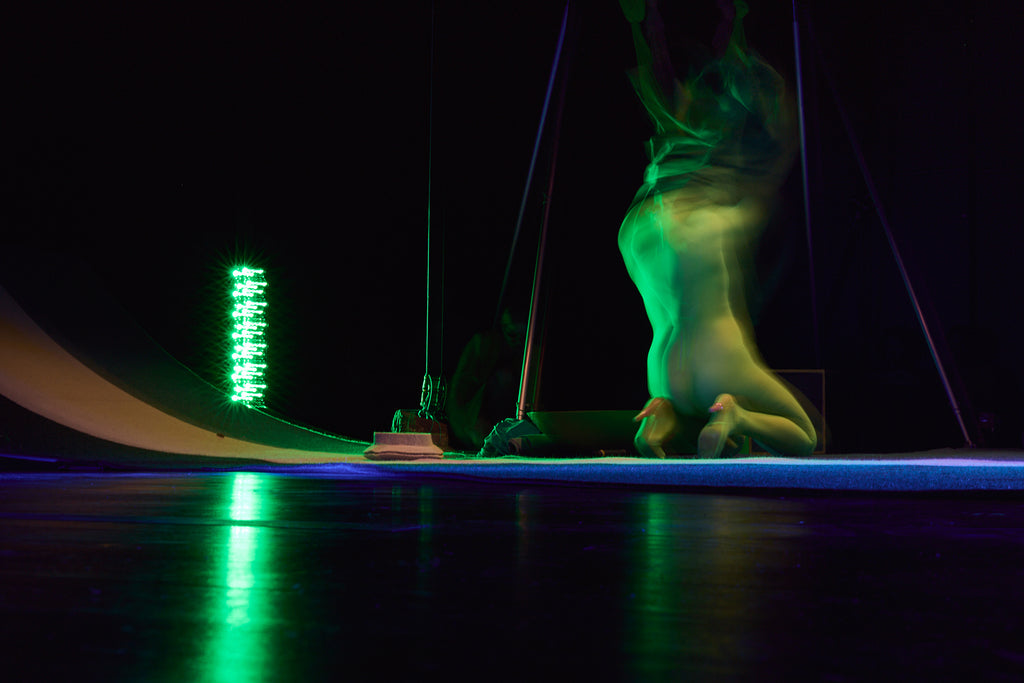Obstructed sightlines, whether by the suspension of large sculptural forms or due to the size of the assembled crowd folded on the floor and upon small, collapsible stools in the Great Hall on a Sunday afternoon for “Liable’s” debut, and dissolved edges, whether due to the softness of a Blake watercolour on a semi-transparent screen in a bright hall or musician singer-songwriter Jonnine Standish, held in a spotlight as she later sang from the balcony, and was visible to me only through the illuminated screen of a person adjacent to me, as they recorded Standish’s performance, wove a link between the three works stronger than location and a weekend. In the gallery, you can record everything, in the role of a Be Your Own Curator on a Choose Your Own Adventure. And so, like proud parents at a school performance, the view before me is one of multiple images of the scene ahead as people raise their phones, record.
In continuation of the cyclic theme, the three heads of Cerberus, animated so as to sing Pattie Page’s “(How Much Is) That Doggy in the Window,” have near morphed into Hepi, Sarah Akin, and Standish, each in the role of Cas Perhaps, in a pre-audition confessional meets slippery half-truth. Cas, having been asked to dance, sing, and act, repeated the steps, but altered them ever so slightly, by tempo, phrasing, and emphasis, in the spinning of a dream, in and out of time. “A lie should be as close to the truth as possible,” explains a version of the Cas loop. “Change small details. Change the times things happened. Change the order of events. I got that off Reddit.”
Upon one of several large screens, Aiken looks at the appearance of a murmuration (in a moving image collage of layers slowly altering by Rel Pham). Atop the screen the words read: “The aim is to produce an affect in the audience.” Dante’s hill on which the sun is shining. Out the corner of my eye, Blake’s leopard of worldly pleasure still spins. A diversion in an umwelt bubble, an environment of my own comprising, until the next time.











comments